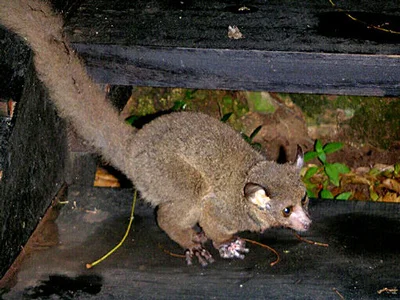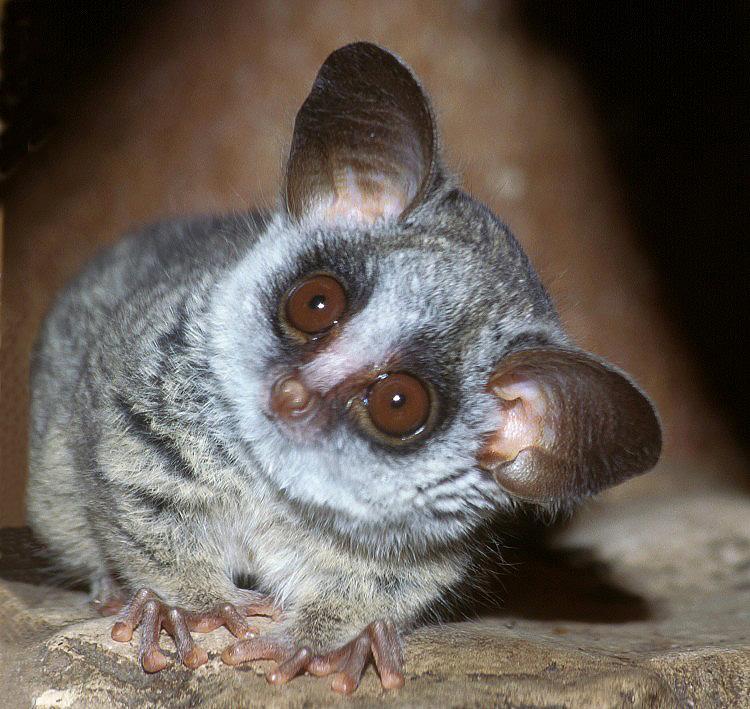Variety Overview
The Senegal Bushbaby (Galago senegalensis), also known as the Senegal Galago, is a small nocturnal primate in the family Galagidae and genus Galago. Characterized by large eyes, strong hind limbs, and long tails, these creatures primarily consume insects, small animals, fruits, and tree sap. As the sole genus in their suborder within the family Galagidae, they are roughly squirrel-sized. Bushbabies are arboreal and nocturnal; they exhibit remarkable agility and can leap distances of 3-5 meters. Their necks possess exceptional flexibility, allowing them to rotate their heads 180 degrees backward. Additionally, they have pairs of nipples located on both their chest and abdomen. Morphologically similar to lorises, bushbabies were previously classified under the family Lorisidae.
Scientific Name (Latin): Galago senegalensis
Alternate Names: Bush Baby, Jungle Baby
Kingdom: Animalia
Phylum: Chordata
Subphylum: Vertebrata
Class: Mammalia
Subclass: Theria
Order: Primates
Suborder: Prosimii
Family: Galagidae
Genus: Galago
Species: G. senegalensis
Habitat Range: Central Africa
English Common Name: Northern Lesser Galago

Design Characteristics
Baby monkeys exhibit some morphological similarities to lorises and were previously categorized under the Lorisidae family.
These primitive primates are about the size of squirrels, featuring large round eyes, bat-like ears, and cat-like faces. Their hind limbs are relatively long with well-developed gluteal muscles that provide significant jumping ability. A thick, long tail stands upright for balance like a rudder. Baby monkeys come in various colors. Their fingers and toes have flat pads that help them climb trees and grip smooth surfaces easily. They prefer living in groups, are nocturnal by nature, and can nimbly leap up to 4 meters.
They belong to the only genus in the family Galagidae within the suborder Strepsirrhini. Named for their generally small size, the type species measures just 11.5 to 17 centimeters in body length. Other species do not exceed 38 centimeters in body length with tails ranging from 15 to 47.5 centimeters; they weigh between 80 to 1240 grams; they look similar to squirrels; have large eyes; membranous ears that stand erect when active but can fold down like fans when resting; their fur is soft yet dense, dull gray-brown or brownish with slightly lighter undersides; legs longer than arms with very long feet featuring large soft pads at finger tips suited for climbing smooth surfaces; flat nails on fingers and toes; extremely flexible necks capable of turning backward by 180°; one pair of nipples each on the chest and abdomen.
Baby monkeys or bush babies are small tree-dwelling primates found in forests and tropical savannas south of the Sahara Desert in Africa. Closely related to lorises (Lorisidae) and pottos (Perodicticidae), these primates range from 10 to 30 inches (25-75 cm) including their tails—longer than other monkey species’ bodies combined. They sport thick soft fur that appears gray or brown on top with lighter shades underneath. Their faces are round with large round eyes.
Most baby monkeys possess flat nails on all fingers and toes except for needle-clawed galagos (Euoticus elegantulus), which feature sharp nails on their index fingers and second toes. Their hands and feet are naturally equipped for gripping with long powerful legs enabling them to leap up to 15 feet between trees or branches while also hopping like kangaroos when on ground.

Living Habits
They live in trees and are active at night. These creatures are agile and skilled jumpers, able to leap distances of 3 to 5 meters. During the day, they rest on tree branches or in tree holes and sometimes occupy abandoned bird nests. They forage in small groups for plants, flowers, fruits, seeds, insects (with a particular preference for locusts), snails, and tree frogs. Larger species also eat lizards and bird eggs and can even catch flying birds and rodents. At night, when light is shined into their eyes, it reflects as red light to us, unlike the blue reflection seen in canine eyes.
Feeding Methods
Baby monkeys share a similar diet with other monkey species, favoring fruits and insects, particularly locusts. In their natural habitat, they typically forage in small groups for plants and their blossoms, fruits, seeds, and so on. Some with more adventurous palates may consume lizards and bird eggs. They are also capable of catching flying birds and rodents.
When a light is shone into an infant monkey’s eyes at night, the reflected light appears red to the human eye, as opposed to the blue reflection seen in canines.
By the age of four months, infant monkeys reach reproductive maturity. They follow a polygynous mating system and breed twice annually—in November and February—producing litters of 1 to 3 offspring each time. The gestation period lasts approximately 110 to 120 days.
